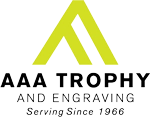Laser engraving is a great way to create custom impressions on objects that become memories. Awards, trophies, medals, plaques, and jewelry are popular choices when we think of engraving special dates, quotes, or initials! However, some materials are not the best fit for laser engraving.
It is best to avoid these completely for safer and more effective handling!
Why Are Some Materials Not Ideal For Laser Engraving?
While we have provided the list of materials considered best for laser engraving, here is why some are not!
- Some materials release toxic materials in the air.
- Some materials might pose a fire hazard.
- Some materials may not give the desired results.
- Some materials compromise the lifespan of your laser machine.
It is best to read the properties of materials for laser engraving before committing to projects. This helps ensure the safety of workers and the longevity of your laser machine.
Top 8 Materials Not Ideal For Laser Engraving
Here is a list of materials you should skip as a laser engraving business!
ABS
Acronym for acrylonitrile butadiene styrene or ABS. It is not volatile under laser-cutting machines, tending to melt and burn. Combined with this unfavorable reaction, it releases toxins in many forms. Due to its ignition properties, it poses a high fire risk.
Epoxy
Epoxy resin is also not ideal for laser engraving. The final results are not as fine compared to other materials like metal and wood. Additionally, it releases highly toxic gas byproducts.
Polypropylene
Polypropylene is another material unsuited for the laser engraving process. It melts and fuses while being treated, resulting in smoke residue and overheating. However, the smoke is considered harmful and can be managed using a filtered extraction system.
PVC/Vinyl/Artificial Leather
Laser engraving involves heat, which causes thermal degradation of PVC material, releasing chlorine gas and hydrogen chloride once dissolved in moisture. However, these byproducts can be removed with good-quality filtration; the harmful risks to equipment and operators make it mostly unfavorable.
Polycarbonate/Lexan™ Thick (>1 mm)
While thin PC/Lexan may seem appropriate for laser engraving, thicker panels are at a high risk of melting, fusion, and discoloration. However, high-powered machines are reported to cut through think PC/Lexan. If you have models that might not support this laser handling, it is best to skip these projects.
Coated Carbon Fiber
While raw carbon fiber cuts well with specialized laser machines, coated carbon fibers might not fit best. Carbon with a layer of epoxy does not react well with incoming laser heat, turning into a rigid, thermoset-bonded finish. Apart from that, coated carbon may release dangerous airborne fibers, posing health risks.
HDPE/Milk Bottle Plastic
Plastic is malleable, which is why applying laser technology to it leaves us with a melted mess. Hence, we don’t consider it an ideal material for laser engraving. Machines with high power ranges might be able to help reduce heat transfer. Aggressive air assistance can be an add-on.
Glued Materials
While glued is a broad term. For better understanding, some treated materials are not good for laser cutting or engraving. Plywood is glue-laminated and it cuts well. However, due to a Phenolic resin layer good extraction and carbon filter masks are must haves. Through this example, we want to emphasize the importance of understanding the properties of glued materials and gauge whether they will be right for laser engraving or cutting.
Overall Insight
Laser engraving might not be suitable for materials such as epoxy, ABS, polypropylene, coated carbon fiber and more. It is best to study each material’s properties for a better idea. At AAA Trophy And Engraving we ensure using the right materials for optimal safety and laser handling. Call us at (713) 464-4766 for more inquiries.
